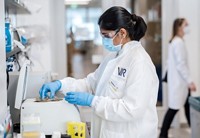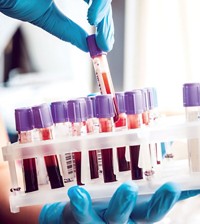Advertisement
Grab your lab coat. Let's get started
Welcome!
Welcome!
Create an account below to get 6 C&EN articles per month, receive newsletters and more - all free.
It seems this is your first time logging in online. Please enter the following information to continue.
As an ACS member you automatically get access to this site. All we need is few more details to create your reading experience.
Not you? Sign in with a different account.
Not you? Sign in with a different account.
ERROR 1
ERROR 1
ERROR 2
ERROR 2
ERROR 2
ERROR 2
ERROR 2
Password and Confirm password must match.
If you have an ACS member number, please enter it here so we can link this account to your membership. (optional)
ERROR 2
ACS values your privacy. By submitting your information, you are gaining access to C&EN and subscribing to our weekly newsletter. We use the information you provide to make your reading experience better, and we will never sell your data to third party members.
Pharmaceuticals
Containing Swine Flu
FDA authorizes unapproved diagnostic test, new uses for drug
by Britt Erickson and Lisa Jarvis
May 4, 2009
| A version of this story appeared in
Volume 87, Issue 18

U .S. OFFICIALS are scrambling to deal with an outbreak of swine flu that is believed to have originated in Mexico and is rapidly spreading across the globe. Tests have confirmed that hundreds of people in at least 11 other countries, including the U.S., have been infected with the newly discovered swine influenza A (H1N1) virus.
The Food & Drug Administration has responded to the threat by authorizing the emergency use of certain antiviral drugs to treat the virus and an unapproved laboratory test to help detect it.
FDA's action allows physicians to give the oral drug Tamiflu to children less than a year old and authorizes the broader distribution of Tamiflu and the inhalant Relenza. News of FDA's emergency authorizations led to a jump in the shares of Roche, Gilead Sciences, and GlaxoSmithKline, which make the approved antiviral drugs.
General Info on H1N1 Flu
The action also authorized the Centers for Disease Control & Prevention (CDC) to distribute its real-time reverse transcriptase polymerase chain reaction Swine Flu Panel diagnostic test to qualified public health labs, even though the test has not been approved by FDA.
The diagnostic works by amplifying viral genetic material from a nasal swab. "A positive result indicates that the patient is presumptively infected with swine flu virus but not the stage of infection. However, a negative result does not, by itself, exclude the possibility of swine flu virus infection," FDA noted in a statement.
CDC is monitoring the scope and severity of the outbreak, and it has released 25% of the antiviral drugs from its Strategic National Stockpile to all 50 states.
Drug companies say they are well equipped to deal with a surge in demand for their products. Amid fears of a global avian flu pandemic in 2006, Roche significantly expanded its list of partners that provide the key intermediates in oseltamivir, the active ingredient in Tamiflu. A more robust supply chain enabled Roche to increase its annual production of Tamiflu by more than 30% to 400 million treatments.
Emergency congressional hearings were held last week to discuss the outbreak and to ensure that federal health agencies are properly coordinating their efforts. And President Barack Obama asked Congress for $1.5 billion to deal with the outbreak.




Join the conversation
Contact the reporter
Submit a Letter to the Editor for publication
Engage with us on Twitter